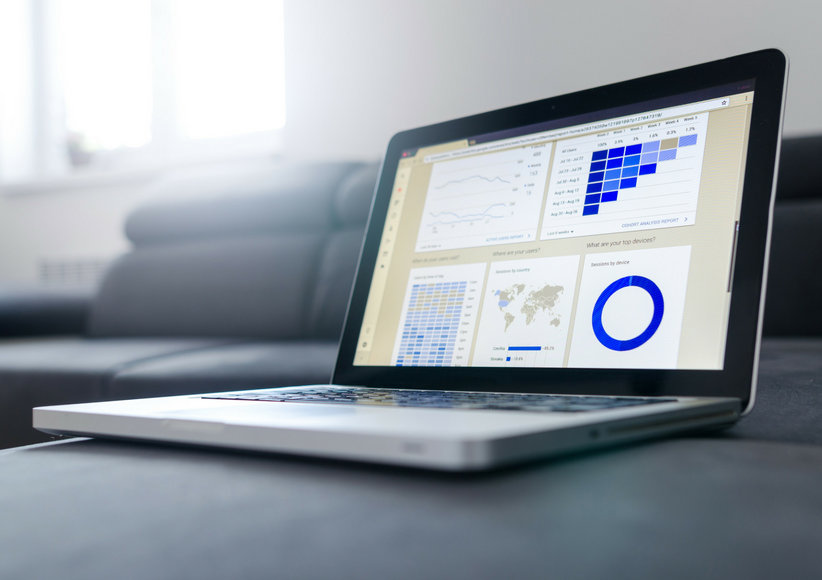
About two years ago, I started a project to review a large health system’s existing reporting as part of an operations optimization initiative. My client counterpart navigated through the first dashboard in the health information system and introduced the top two charts, saying, “Don’t pay attention to these—I’m not sure why they’re included in this dashboard anyway.” In retrospect, I should have asked for more of an explanation, but I took the advice and moved on. It is clear my client’s charts were occupying high-value real estate on the dashboard but not delivering meaningful information.
Data visualization can be a powerful tool if it is used properly—and a large waste of space, if not. John Franks of Credera’s Analytics and Business Intelligence Practice says, “Always make sure to see the ‘forest through the trees’ in data visualization. In other words, remember the ultimate questions that are being answered.” So, here are a few questions to help ensure your dashboards and data visualizations create meaning and do not become space-wasters.
1. Who Are My Users and How Do They Interact With Data?
In a Harvard Business Review white paper, Teradata Chief Analytics Officer Bill Franks (no relation to John Franks) emphasizes the importance of people in visualization. He argues, “Visualization tools aid with discovery of new information, but are not a silver bullet. People are needed to find, communicate, implement, and operationalize the insights.” Understanding how and why users will operationalize dashboard data enables the developer to weave complex data and simple concepts together to create meaning.
When generating visualizations, ask yourself the following questions:
What about this data is important to the specific end users?
How do these users digest, interpret, and use data?
Involve your end users early in the process and allow them to contribute to the design of the data visualization; discuss what is technically feasible and how the data will most easily be digested by both regular users and occasional users. This is the first step to ensuring user acceptance in the final phases of a rollout. A well-designed dashboard will have little meaning if it is developed without the goals of the user in mind.
2. What Would UX/UI Do?
When it comes to effectively displaying your data, simplicity is often best. In other words, avoid overloading your charts by stacking data on top of itself and stay away from wild colors or styles that detract from overall meaning. Try breaking large groups of data into smaller multiples of the same chart or graph. Remember, the most important information should naturally draw the reader’s eye and attention.
When in doubt about layout and design, review your dashboards with these questions in mind:
Are the colors helping or hindering?
One glance test: Is the conclusion clear in a quick glance?
PowerBI’s white paper on Best Design Practices suggests treating your dashboard like an art gallery: You wouldn’t put 50 pieces of art in a small gallery with limited options for viewing each piece individually. There are many online communities and forums for learning the best way to display multiple visualizations on a single dashboard. Don’t recreate the wheel—learn from what other visualization experts are sharing!
3. What Questions Does This Data Answer?
In some cases, visualizations are not actionable—the graph or chart prevents the user from making operational decisions to improve business outcomes. This is likely because the question the graph answers is not the one the end user is asking. For example, displaying a list of sales averages across regions will not help a supervisor understand the top sales performers by region, which is why it is critical to understand what questions should be answered up front.
Before moving forward with any kind of visualization, find out what the data will aim to communicate:
Are end users interested in outliers or averages?
Are users hoping to see how many categories surpass a threshold or how many do not meet goals?
The answers to these questions will help determine which calculations on the raw data will lead to the most meaningful data visualization. Sorting, for example, can be a great tool if you know what needs to stand out, so take time upfront to understand how data interplays with business operations. Tableau’s Visual Analysis Guidebook recommends: “Put the most important data on the X- or Y-axis and less important data on color, size, or shape.” Following this guideline will allow users to make clear decisions on the most important metrics.
Charts, graphs, and other visual aids are most useful when users can quickly glean results and conclusions to make operational decisions. The most effective visualizations usually continue the process of inquiry, leading users to ask how they can improve a process or make a positive business impact.
Check out our Analytics & Business Intelligence Solutions for more information on how Credera can help you maximize your data and take strategic action. If you have specific questions, please reach out to us at marketing@credera.com.
Contact Us
Ready to achieve your vision? We're here to help.
We'd love to start a conversation. Fill out the form and we'll connect you with the right person.
Searching for a new career?
View job openings